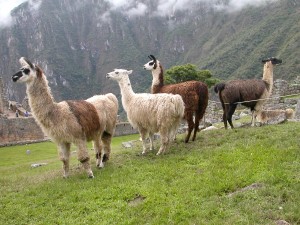South America has long captivated travellers with its plethora of natural and cultural wonders. Take a quick inventory of continental highlights, and it is easy to see why — idyllic beaches, snow-covered mountains and tropical rainforests, all of which make a fine backdrop for a memorable holiday.
There is just one catch: this continent is massive. There is simply no way to see it all (unless you have a couple of spare years up your sleeve). So if you have been thinking of going but do not quite know where to begin, here is a quick primer on South America’s top destinations:
Peru and Bolivia

The Plaza de Armas of the city of Cuzco, Peru at night.
One of the many classic South American routes involves bumping around the Andes, visiting the indigenous villages, colonial towns and ancient ruins found amid those staggering mountain peaks. Peru is a great place to start. High in the Andes, you will find enchanting Cuzco, the oldest continuously inhabited city on the continent and a fine base for exploring archaeological treasures like nearby Machu Picchu. Other Peruvian highlights include trekking in the Cordillera Blanca, walking the cobblestone streets of Arequipa, flying over the mystical Nazca Lines and visiting the floating islands in Lake Titicaca.
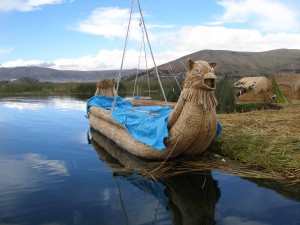 Reed Islands, Lake Titicaca
Reed Islands, Lake Titicaca
At Titicaca, you can continue by boat across to Bolivia, home to enthralling indigenous villages, biologically rich forests, soaring mountains and the bizarre and beautiful salt flats of Salar de Uyuni.
Ecuador
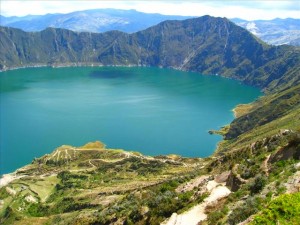 The Quilotoa loop, heart of The Andes, Ecuador
The Quilotoa loop, heart of The Andes, Ecuador
If time is limited and you hope to pack a lot into your itinerary, smallish Ecuador is a good bet. It has the beautiful colonial towns of Quito and Cuenca that are among the best places to study Spanish in South America (notable for inexpensive one-on-one language schools and homestays with local families). The famed Andean mountains are never far, and you can trek through alpine scenery (the four-day Quilotoa loop is popular), mountain bike along rugged mountain roads, bird-watch in cloud forests or arrange horseback rides on the flanks of snow-covered volcanoes (try Cotopaxi National Park). You can also spend a few days in a rainforest lodge in the Amazon. If time and budget allow, tack on a five-day tour of island-hopping in the Galapagos at the end.
Brazil
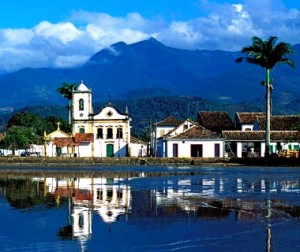 Pretty Paraty, Brazil
Pretty Paraty, Brazil
Larger than the continental US, Brazil is the geographic (and economic) giant of South America. It is also Latin America’s priciest country, so plan accordingly. Planted among forest-covered mountains, Rio de Janeiro is a magnificent introduction to Brazil, with a great music scene, alluring beaches and heady festivals. A few hours away, you can explore remote coastline, rainforest-covered islands (such as Ilha Grande) and colonial towns like jewel-box Paraty. With more time, you can add a few internal flights and visit other regions, starting in the northeast in Salvador, a colourful colonial city that is the drumming heart of Afro-Brazilian culture. Other options: thundering Iguazu Falls on the Argentine border; Belem or Manaus, gateways to the Amazon; and architecturally intriguing Brasilia.
Colombia
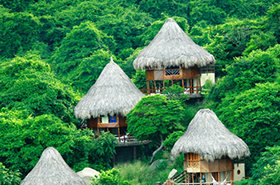 Parque Nacional Tayrona
Parque Nacional Tayrona
If you have not heard by now, Colombia is open for travel and safer than it has been in decades. Bogota, the high mountain capital, is a cultural behemoth with salsa-filled nightclubs, charming cafes and intriguing nearby sights — including a surreal underground salt cathedral, 50km north of the city. For other Colombian hits, try sunning on the Caribbean coast at Taganga or the pristine beaches of nearby Parque Nacional Tayrona; trekking to the Ciudad Perdida (“Lost City”), the largest pre-Colombian town in the Americas; or exploring the photogenic streets of colonial Cartagena and its neighbouring coral-fringed islands.
Argentina and Chile
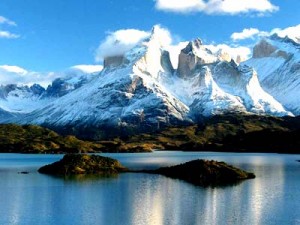 Patagonia’s beautiful untamed landscape
Patagonia’s beautiful untamed landscape
Anchoring Latin America’s southern extremes, these two countries have vineyards, lively capitals and share the laid-back Lakes District, home to hot springs, picturesque villages and outdoor activities such as hiking, rafting, climbing and skiing. You will find unrivalled adventure in Patagonia: trekking and horse riding against a backdrop of glaciers, petrified forests, snow-covered peaks and other stunning scenery.
Regis St Louis
9 Nov 2011
http://www.bbc.com/travel/feature/20111107-a-beginners-guide-to-south-america
Average Rating: 5 out of 5 based on 175 user reviews.
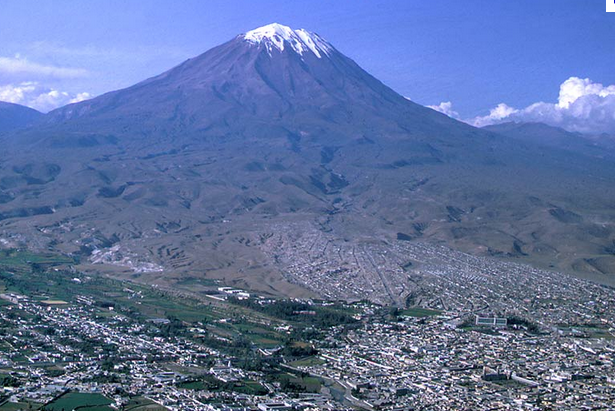 The first day in Arequipa found the five of us – the aussies, the Bedfords and yours truly – opting to go on a masochistic excursion to the Colca canyon, which included waking up at 2 in the morning and ascending 2400m along a bumpy road. My body reacted violently to the sudden elevation change and by the time we reached our breakfast stop, I had managed to get rid of my previous night’s dinner and half of my body fluids in three attempts. The famous coca tea, which I drank by the gallon, managed to convince my body that the world was not coming to an end. The primary reason for all the effort was to make it to the canyon, which by the way is the deepest in the world, by early morning to see the the flight of the andean condors, which by the way is the largest flying bird in the world. The condors rise from the canyon floor with the thermals and we were lucky to see a half a dozen of them that morning. The canyon was completely covered by many pre-inca terraces where cultivation is carried on even today. There were some 11th century stone plans of the terraces showing the major aqueducts which irrigate the region. Needless to add, these plans were fairly accurate even today. We also saw the famous hanging tombs of Choquetica, named so because the people used to hang from top of the cliffs to build them and hence the only way to reach them is also from the top! On the way back, we stopped at the high pass, the Patapampa pass which is at an elevation of 4800m and also at various other points to watch herds of grazing llamas, alpacas and the rarer vicunas. During one of the pit stops, we had a llama entering our van and going for our food pack. When I tried to pull the food away, the llama started using its secret weapon : the spit. In order to save us some washing, we fed the llama all of the sugar puffs that Juliet had bought the previous day. We were later informed by the guide that these puffs were known as the Peruvian viagra. Well, in case there is a sudden explosion of llama population in Peru, you know whom to blame!
The first day in Arequipa found the five of us – the aussies, the Bedfords and yours truly – opting to go on a masochistic excursion to the Colca canyon, which included waking up at 2 in the morning and ascending 2400m along a bumpy road. My body reacted violently to the sudden elevation change and by the time we reached our breakfast stop, I had managed to get rid of my previous night’s dinner and half of my body fluids in three attempts. The famous coca tea, which I drank by the gallon, managed to convince my body that the world was not coming to an end. The primary reason for all the effort was to make it to the canyon, which by the way is the deepest in the world, by early morning to see the the flight of the andean condors, which by the way is the largest flying bird in the world. The condors rise from the canyon floor with the thermals and we were lucky to see a half a dozen of them that morning. The canyon was completely covered by many pre-inca terraces where cultivation is carried on even today. There were some 11th century stone plans of the terraces showing the major aqueducts which irrigate the region. Needless to add, these plans were fairly accurate even today. We also saw the famous hanging tombs of Choquetica, named so because the people used to hang from top of the cliffs to build them and hence the only way to reach them is also from the top! On the way back, we stopped at the high pass, the Patapampa pass which is at an elevation of 4800m and also at various other points to watch herds of grazing llamas, alpacas and the rarer vicunas. During one of the pit stops, we had a llama entering our van and going for our food pack. When I tried to pull the food away, the llama started using its secret weapon : the spit. In order to save us some washing, we fed the llama all of the sugar puffs that Juliet had bought the previous day. We were later informed by the guide that these puffs were known as the Peruvian viagra. Well, in case there is a sudden explosion of llama population in Peru, you know whom to blame!